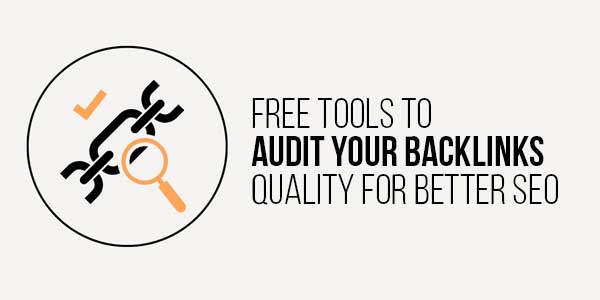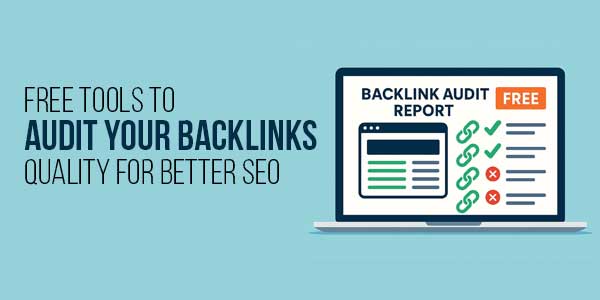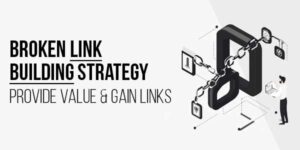
Let me tell you a little story. A few years back, I was feeling pretty good about my blog’s SEO. My content was solid, I was publishing regularly, and I was even getting some decent backlinks. Or so I thought.
Then, out of the blue, my organic traffic took a nosedive. I’m talking a 40% drop in a matter of weeks. Panic mode? Absolutely. After frantically digging through Google Search Console, I found my culprit: a manual penalty for “unnatural links.”
Yikes.
Turns out, while I was busy celebrating every new link, I wasn’t paying attention to where those links were coming from. A bunch of spammy, low-quality directories and questionable “guest post networks” had started linking to me, and I was completely oblivious. Google, of course, was not.
That was the day I became utterly obsessed with backlink quality. And friend, let me tell you, auditing your backlinks isn’t just a “good practice”—it’s essential, non-negotiable, protect-your-hard-work kind of stuff. The best part? You don’t need a massive budget to do it right.
So, grab a coffee, and let’s walk through the free tools and strategies I now use to keep my backlink profile clean, healthy, and powerful.
Table of Contents
Why Bother With A Backlink Audit? Isn’t More Always Better?
If you’re thinking, “A link is a link, right?”—I get it. I used to think that too. But in the modern SEO landscape, quality trumps quantity every single time.
Think of it like this: if your website is a party, backlinks are the guests. You want respected, influential guests (links from authoritative sites in your niche) who make your party look awesome. You do not
Here’s what happens if you ignore your backlink profile:
- Google Penalties: This is the big one. A manual action can wipe your site from the search results until you clean up the mess.
- Algorithmic Dings: Even without a manual penalty, algorithms like Penguin can demote your site for having a poor link profile.
- Wasted Crawl Budget: Googlebot wastes time crawling through junk links to your site instead of discovering your great new content.
- Reputation Damage: What does it say about your brand if you’re associated with link farms or porn sites? Not exactly a good look.
Convinced yet? Good. Let’s get to the good stuff.
The Golden Rule: Where To Start Your Audit
Before you even touch a third-party tool, your first stop is absolutely critical: Google Search Console. This is Google’s direct line to you, and it’s where they’ll report any problems they find.
Step 1: The Google Search Console Health Check
Head over to your Search Console account and navigate to “Security & Manual Actions” > “Manual actions.” Say a little prayer and click. If you see a message that says “No issues detected,” you can breathe a temporary sigh of relief. This means Google hasn’t hit you with a manual penalty… yet.
But remember, no news here doesn’t necessarily mean all is well. You could still be suffering from algorithmic ranking drops. So the next step is to go to “Links” and download your latest external link report. This gives you Google’s own list of links pointing to your site—a fantastic starting point for your audit.
“Your backlink profile is your website’s reputation. You wouldn’t let just anyone vouch for you in real life, so why would you online? Audit relentlessly.”
The Free Tool Arsenal: My Go-To Backlink Checkers
Now, GSC is great, but it doesn’t show you everything. You need to see the bigger picture. Here are the free tools I use on a regular basis to get a complete view of my backlink landscape.
1. Google Search Console (The Foundation)
We already talked about it, but it’s worth repeating. It’s free, it’s direct from Google, and it’s the first place they’ll tell you if something’s wrong. It should be the cornerstone of your audit process. Use it to export your list of links and start your analysis.
2. Bing Webmaster Tools (The Unsung Hero)
Don’t sleep on Bing! Bing Webmaster Tools is 100% free and offers a surprisingly robust backlink analyzer. Why use it? Sometimes it finds links that Google misses. A second opinion never hurts, especially when it’s free. The interface is clean, and the “Inbound Links” report is straightforward and useful.
3. Ahrefs Webmaster Tools (A Powerhouse On A Budget)
Okay, if I had to pick one free tool that feels like cheating, it’s this one. Ahrefs Webmaster Tools (formerly known as Ahrefs Free Backlink Checker) is a gift from the SEO gods. You get a taste of Ahrefs’ massive database for zero dollars.
You can see:
- Your top linked pages
- Your top anchor text (super important!)
- Referring domains
- And it even gives you a Domain Rating (DR) score for your site.
The best feature? The “Referring Domains” report. You can sort these domains by their Domain Rating. This instantly shows you your highest-quality links (high DR) and, conversely, your lowest-quality links (low DR). This is where you start your triage.
4. Moz Link Explorer (The Community Favorite)
Moz’s Link Explorer offers a free tier that lets you run a limited number of queries per month. It’s not as generous as Ahrefs, but it’s still incredibly valuable. Moz uses its own metric called Domain Authority (DA), which is similar to Ahrefs’ DR.
I like to cross-reference here. If a site has a low DR on Ahrefs and a low DA on Moz, it’s a pretty strong signal that it’s not a very powerful or authoritative domain. This free tier is perfect for checking on specific URLs or domains you’re unsure about.
5. SEMrush Backlink Analytics (The All-Rounder)
Similar to Moz, SEMrush has a powerful backlink tool with a free account option. Their free version gives you a glimpse into your backlink profile, including top backlinks and anchor texts. SEMrush also has a really nice “Toxicity Score” feature in its paid version, but even the free data can help you spot trends.
6. Linkody (For Monitoring)
Linkody offers a free plan that allows you to monitor up to 50 backlinks. While limited, it’s fantastic for keeping an eye on your most important links. It sends you email alerts when you gain or lose a link, which is huge for catching new spammy links early or celebrating a new great link!
How To Actually Analyze The Links You Find
Okay, you’ve used the tools and now you have a giant list of links. It’s overwhelming. What now? You need a system. I look for these red flags:
Red Flag 1: Spammy Neighborhoods
Where is the link coming from? If it’s a site completely unrelated to yours (e.g., a payday loan site linking to your baking blog), that’s a red flag. Also, be wary of known spam hubs like free article directories, link farms, comment spam, and shady forums.
Red Flag 2: Suspicious Anchor Text
Look at the clickable text of the link. Is it stuffed with an exact-match commercial keyword like “best Boston divorce lawyer” in a weird, unnatural way? A healthy profile has mostly brand-based (your blog name, URL) and natural anchor text (“click here,” “this article”). A sudden influx of exact-match anchors can look manipulative to Google. This is a crucial part of understanding what SEO is and how to do it right.
Red Flag 3: Low Authority & Metrics
As I mentioned, use the free metrics from Ahrefs and Moz. Domains with a DR/DA of zero or single digits are typically very weak and often questionable. They’re not necessarily toxic, but they’re not doing you any favors either.
Red Flag 4: “Nofollow” vs. “Dofollow”
This is less of a red flag and more of a categorization exercise. “Dofollow” links (the default) are the ones that pass SEO value. “Nofollow” links have a `rel=”nofollow”` tag that tells Google to ignore them for ranking purposes. You want a natural mix of both. A profile with 100% dofollow links looks weird and manipulative. Seeing a nofollow link from a huge site like Wikipedia or Reddit is actually a great sign of a natural profile!

The Action Plan: What To Do With Toxic Links
You’ve found the bad links. Now what? You have two main options:
Option 1: Disavow (The Nuclear Option)
This is where you create a list of toxic links and submit it to Google through Search Console, effectively saying, “Hey, I don’t want to be associated with these domains. Please ignore them.”
Warning: Use the disavow tool with extreme caution. If you mess it up, you could accidentally disavow good links and hurt your own rankings. Only use this if you have a clear, obvious manual penalty or a significant number of truly toxic links that you cannot remove manually. It’s not a routine cleaning tool.
Option 2: Outreach & Removal (The First Resort)
Your first attempt should always be to get the link removed from the source. This is the cleanest solution.
- Find a contact email on the offending website.
- Politely ask them to remove the link. You can be honest: “Hi, I’m auditing my backlinks and noticed a link from your site. Could you please remove it?” You don’t always need to accuse them of being “toxic.”
- Be prepared for no response. Many of these sites are abandoned or don’t care.
If you can’t get it removed, then you can consider disavowing. Document your outreach attempts; it shows Google you tried to clean it up yourself if you ever need to submit a reconsideration request. This process of cleaning up your profile is just as important as the on-page SEO checklist you use for your content.
Building Good Links: The Flip Side Of The Coin
Auditing isn’t just about removing the bad; it’s about guiding your strategy to build more good ones! When you analyze your profile, note which links are strong. What do they have in common?
- Are they from .edu or .gov domains?
- Are they from influencers in your niche?
- Did they come from a specific type of content, like a definitive guide on how to create a blog?
Use these insights to go out and get more links just like them. Focus on quality, not quantity. One link from a top industry site is worth more than 1,000 from spammy directories.
Wrapping Up: Make It A Habit
Auditing your backlinks isn’t a one-and-done task. I try to do a quick check with the free tools once a month and a deeper dive every quarter. It’s like getting a regular health check-up for your website. It prevents major catastrophes down the line.
Remember, SEO isn’t a sprint; it’s a marathon. Building a clean, authoritative backlink profile is one of the most reliable ways to ensure long-term, sustainable growth for your blog. It protects you from penalties, strengthens your reputation, and ultimately tells Google that you’re a site worth ranking.
So, what are you waiting for? Go open those free tools and see what’s lurking in your backlink profile. Your future SEO self will thank you for it.
Frequently Asked Questions (FAQs)
How often should I audit my backlinks?
For most bloggers, a quick audit once a month and a more thorough one every 3-6 months is sufficient. If you’re in a spam-prone niche or actively building many links, you might want to check more frequently.
Are nofollow links completely worthless for SEO?
Not at all! While they don’t pass “link juice” in the traditional sense, they contribute to a natural and diverse backlink profile. A nofollow link from a highly reputable site like The New York Times still brings traffic, brand awareness, and trust signals.
What’s the difference between a manual penalty and an algorithmic filter?
A manual penalty is a human-reviewed action at Google that results in a notification in Search Console. An algorithmic filter is an automatic demotion caused by an algorithm like Penguin. Both hurt your rankings, but a manual penalty requires you to take action and submit a reconsideration request.
Can I get penalized for bad links I didn’t build myself?
Unfortunately, yes. Google’s guidelines state that you are responsible for the links pointing to your site, regardless of who built them. This is why regular audits are so crucial for your SEO strategy.
What is a “toxic” backlink?
A toxic backlink is typically from a site that violates Google’s Webmaster Guidelines. This includes links from link farms, porn sites, gambling sites, spammy directories, sites with malware, or sites with extremely low quality and authority.
Is the disavow tool dangerous?
It can be if used incorrectly. If you disavow good links, you can harm your own rankings. It should only be used as a last resort after you’ve tried to get spammy links removed and have a significant number of truly toxic links.
Why does my backlink count fluctuate in different tools?
Each tool (Ahrefs, Moz, SEMrush, Google) has its own database and its own way of crawling, counting, and deduplicating links. They also update their data at different frequencies. Focus on the overall trend rather than the exact number.
How many backlinks do I need to start seeing results?
There’s no magic number. One powerful link from an authoritative site can have more impact than 1,000 weak links. Focus on the quality of each link rather than hitting a specific count. It’s a core principle of off-page SEO.
What’s the best way to build high-quality backlinks naturally?
Create truly exceptional, link-worthy content that people naturally want to share and reference. Other great methods include guest posting on reputable sites in your niche, broken link building, and creating useful tools or resources. This is often called link building.
Should I pay for backlinks?
Buying links is explicitly against Google’s Webmaster Guidelines and can result in severe penalties. The risk far outweighs any potential short-term reward. Invest your time and resources into earning links through great content instead.


















Be the first to write a comment.